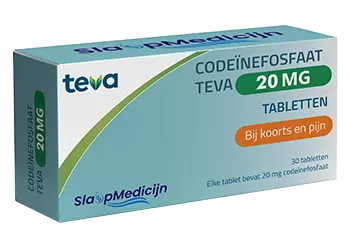The growing popularity of live streaming In recent years, live streaming has gained immense popularity with people opting for the virtual experience to attend an event instead of having to be physically present to watch the event. Best Live streaming is essentially a feature that enables internet users to broadcast live video and audio feed to viewers, similar to the concept of live television telecast. The only difference is that live streaming is transmitted through the internet and not television broadcast. It is also available to chat with the person broadcasting. The number of organizations hosting live streams has been rapidly increasing, which is evident of the growing popularity of live streaming. A good example of this would be e-sports events where there are competitive gaming competitions held in different countries. E-sports enthusiasts from other countries who cannot attend the event would opt to watch the live stream of the event. Another example would be music festivals and concerts. Often times, local events are unable to garner enough attention and support while international events usually overshadow the attention for local events. Therefore, event organizers would hope to attract an international audience to attend their local event, fostering growth of popularity for the event. With live streaming, foreign audiences are able to have a glimpse of something they would have missed out on years ago.
The Growing Popularity of Live Streaming
The term live streaming can refer to many things, from social media live streams from an individual’s mobile device “going live” to large scale productions from companies using professional equipment. The former is certainly populist and has its place for a company using the power of a well-known individual to promote a product or service, but businesses delving into serious best live streaming events with the intention of promoting a high standard of professionalism, security, provide a reliable service with a multitude of features and options will most likely be looking to use a live streaming provider. The purpose of this guide is to address the best practices and considerations for such events using professional service settings. According to research conducted by the Content Marketing Institute and MarketingProfs, 74% of surveyed B2C marketers said they had used live video, and 42% of B2B marketers said the same. Additionally, 50% of those marketers’ respondents plan to use live stream video services in the next year (King, 2018). This is the most recent data at this time and suggests a slightly higher statistic before the Covid-19 Pandemic. Live streaming is growing in popularity throughout the entire business sector, whether companies are live streaming or hosting online events due to complications with the pandemic, for marketing, communications, product demonstrations, training or education, interview segments, Q&A webinars… live streaming has become an invaluable tool and is the third most popular content type used by marketers and growing (King, 2018).
Benefits of Live Streaming Events
It provides a way to access valuable data. People like to consume information in different ways. Some people might want to go through a whole report, but others could find a 5-minute video presenting the same data more engaging. As best live streaming becomes more and more popular, it will be there as an option for viewers who prefer this method over reading a written article. Imagine a colleague has given a presentation on a certain topic. You are very interested in this topic and would like to learn more on it. But as the speaker is in a different time zone at a conference that started late at night, you fall asleep before the presentation begins. It would be unfeasible for you to fly over just to see this presentation. But if the presentation was live streamed, you could still view it at a later time.
Overview of Live Streaming in Singapore
Live streaming is a relatively new technology in Singapore compared to other Asian countries. According to a research conducted by Yahoo Singapore in 2013, only 21 percent of Singaporeans knew what live streaming was, and only 9 percent had done so. It was reported that the majority of the respondents found that video and audio quality was poor and the connection was often lost, leaving them frustrated. On the same year, another research was conducted by Nielsen which showed that the reach of video on demand services was 47 percent, while the online viewership of free to air TV content was 43 percent. There are an increasing number of viewers accessing videos on smartphones, tablets, and laptops. In 2016, there was a statistic which showed 75 percent of Singaporeans spent an average of 27 hours per week on digital media. This indicated that Singaporeans are spending more time on digital platforms and best live streaming can be an effective way to reach out to the audience. Given the developments in technology increasing access to the internet, it is apparent that live streaming is a viable and convenient way of engaging an audience in Singapore. Due to the high internet speed and accessibility in Singapore, viewers can have easy access to live streams with a user-friendly experience and this changes their perception of online video content. The Informit article said that “The experience of TV over the internet is no longer an inferior version of broadcasting on a TV, thus it is increasingly how people consume video content”. This change in perception would mean that live streaming is likely to replace some traditional forms of viewing for specific types of content.
Preparing for a Successful Live Stream
If you plan on monetizing your stream, it may also be wise to consider the differences in ad regulations between certain platforms. Make sure to make the best decision for your event live streaming by weighing these options.
Another thing to consider when choosing a platform is connection. If the event will be streamed using a wireless 4G connection, using a platform like Twitch or YouTube will be near impossible. Those considering to stream via wireless internet should look at lower latency streaming platforms such as using a personal Flash Media Server. They’re more reliable for slower connections, won’t need transcoding, and are highly scalable.
The first and some consider most important step when preparing for a live stream is choosing the right platform. When choosing a platform, you must consider what sort of event it is. For example, video game tournaments/streams are often streamed on Twitch.tv as it is a popular platform that caters to the audience the video game community brings. Often times, businesses will choose to stream their events on YouTube as it’s easily accessible and can be linked into any website.
Choosing the Right Platform
There are many differentlive streaming platforms available, but not all of them are suitable for live event streaming. An important first step is to identify which platforms are likely to offer the best service for your specific event. Some platforms are more user-friendly and easier to set up, while others may offer more advanced features such as monetization, higher video quality, ad-free viewing, and so on. It is important to carefully consider your own needs versus the difficulty level and cost of implementing each service. In some cases, using multiple platforms to stream to multiple audiences may be a good strategy. For example, a conference could be live-streamed on its Facebook page to the general audience, but also be live-streamed on YouTube with restricted access and added monetization for virtual ticket holders. In this case, using Restream or Castr, multi-streaming would be an effective way to simultaneously broadcast to both platforms with a single video source.
Ensuring Sufficient Bandwidth and Internet Connectivity
On any given day in 2016, a high-definition video can use upwards of 10GB of data per hour of footage. As a PC game broadcasting at 10Mbps, this can result in 3.75GB of data being used in one hour.
With this being said, the majority of live streamers will still require high-speed internet for other users to use within their network while they are live streaming. This is especially important for gamers who use consoles. As during the live stream process, a portion of the console’s resources will be allocated to the game, while the rest will be allocated to the stream. These same console gamers may also want to live stream PC content and will be interested in a wired internet connection from their PC for the best possible results.
When it comes to best live streaming, a high bandwidth is essential. Most people are well aware of this fact but are unsure of what kind of bandwidth is truly required. The short answer to this question is: it depends. For the most part, unless you are planning on live streaming 1080p at 60fps, you will most likely need an upload speed of less than 6Mbps. YouTube, for example, recommends a minimum of 1Mbps speed to live stream content.
Selecting the Appropriate Equipment and Software
With several streaming options available on the market, choosing the most suitable live video streaming production platform can be crucial in the success of a live stream. In the creation of the ‘Singapore: Live Stream Event’ for National University of Singapore, we evaluated various streaming options to determine one that was most suitable for the event. For example, two of the most popular solutions were Content Delivery Network (CDN) live streaming with RTMP Flash Server hosted on-site, and Google Hangouts on Air. The former option was rejected due to the complexity and cost of setting up an RTMP Flash server or hiring a CDN provider, which would exceed the budget and technical capability of the live stream team. The Google Hangouts on Air requires a Google account and the event page would have to be launched from a Google account as well. This conflicted with the requirement for an official event page hosted on the NUS server. For these reasons, both streaming solutions were deemed unsuitable for our live stream event and we decided to utilize webcasting or webcasting using a content management system (CMS is a more modern form of webcasting). This option was chosen as it is simple, easily accessible to viewers and often requires only a video camera and a computer with an internet connection to broadcast. High-end systems may include encoders, a video switcher or other various media appliances. Webcasting is suitable due to the high compatibility with the event requirements, and availability of a plethora of service providers at various costs. Equipment such as video cameras, microphones, audio mixers, switchers and encoding hardware/software are dependent on the complexity and scale of the live stream event. In this case for NUS, a simple webcast may only require a single video camcorder which captures video and audio (a USB microphone can be sufficient for better audio quality) connected to a computer for web streaming. On the other hand, complex live events such as sports or news may require multiple cameras with a mix of audio and video from various sources. After determining the type of equipment required, the next step in selecting appropriate equipment would be finding the most cost-effective solution. Due to the popularity of the best live streaming today, there is a myriad of equipment available both offline and online at various costs. In the interests of keeping to the event budget, it is important to research and find the most cost-effective solution, balancing cost with quality and necessity.
Planning the Event Logistics
An event can have quite substantial costs, and logistical details are vital for smooth live streaming. In planning the event logistics, everything from transport arrangements to contingencies for delays and cancellations need to be covered. Staff should ensure they work closely with external event managers and organisers, to ensure they are fully aware of all event requirements. Good communication is often the key to a successful event, and it is highly beneficial to conduct a meeting with all parties involved in the event to discuss logistical details. Create and circulate a detailed event schedule in advance, stating set up times, performance times, and any other relevant information. This will help to identify any timing overlaps or clashes, and allow sufficient time for set up. It is also crucial to identify key contacts for all parties involved, should any issues arise on the day.
Engaging Your Audience Through Live Streaming
Your live video will be notified to your fans through notifications, so ensure that your content is what your fans anticipated and worth the watch. Start your video off strong by featuring an eye-catching title and subtitle to pique interest and ensure an extensive amount of your viewers watch your stream. When live, try to keep engaging, explain aspects of your gameplay and thoughts aloud to immerse viewers. Entertaining or informative streams usually keep viewers interested and remaining in the stream. If the content in your livestream is stale or quiet, or off-topic, viewers may find it uninteresting and leave, possibly even unfollowing your page. It is crucial to stay on topic with your gameplay and involving viewers in your broadcast helps as well. This can involve asking questions, running polls, or proactively responding to what viewers type in your chat. Finally, use teasers to keep viewers interested in content you plan to stream in the future. This will leave the viewer looking forward to more and checking back at your stream on later dates.
Creating Compelling Content
The content should also be lively and engaging, avoiding a monotonous tone. A personable and friendly tone will help the viewer to connect with the content. The use of real-life stories and experiences can aid in building an emotional connection with the viewer. Spokespeople should be credible and likable. Primary research indicated that viewers in Singapore generally prefer local personalities. Keep the content concise and to the point, avoiding lengthy and draggy information. High-quality visuals and multimedia can significantly enhance the understanding of the content. This can include animations, video clips, and colorful diagrams. Lastly, the content should cater to a wide audience, be inclusive, and be sensitive to all races and religions in Singapore.
The key to ensuring that the audience is engaged is to create content that captures and maintains their attention. Successful content is often characterized by its ability to relate to the viewers, intriguing or entertaining them. It should be worthwhile and add value to the viewer. In the initial research and discussions with MediaCorp, the first step to ensuring quality content is recognizing the target audience. The content should appeal to viewer self-interest and be relevant to their wants and needs. It should be at the right level for the audience and should avoid being condescending or too complex.
Utilizing Interactive Features
Live streaming is a visual medium, and as such, the inclusion of interactive features is key to promoting engagement. Interactive features can be anything that involves the audience and encourages them to become a part of the broadcast; for example, polls, Q&A sessions, and clickable calls to action. It is more effective to have live interactions throughout the entire broadcast, rather than just at specific points. The latter may often result in a loss of viewers before the interactive event takes place. Live interactions should be kept simple and seamless; interrupting the viewing experience will often cause viewers to become frustrated and disengaged. When planning an interactive event, viewers should be informed well in advance; this will help build anticipation and attendance. Another effective method of engaging viewers is to create a personalized experience. Take, for example, a travel show featuring a particular city or country. By including an interactive map which allows viewers to click various points of interest for further information, viewers are able to take control of their experience by choosing what information they would like to receive. This creates a connection between the viewer and the content as they become active participants, rather than passive viewers. The longer a viewer is engaged, the more likely they are to form a favorable impression of the brand and its content. A favorable impression is likely to result in repeat viewership and increased conversions.
Incorporating Social Media Integration
Social media has become an important part of people’s lives in recent times. According to a study conducted by The Nielsen Company, global consumers now spend 82% more time on social media sites, averaging 5.5 hours a month in 2010, compared to 3.1 hours in June 2009. Among the countries tracked by Nielsen for the State of the Media: The Social Media Report 2010, the biggest increases in time spent on social media sites were found in Australia, Brazil, France, Germany, Italy, Japan, Spain, Switzerland, and the United Kingdom, with the United States being the heaviest user. It has revolutionized the way users communicate and share information with one another and has also changed the way businesses interact and engage with their audience. One of the greatest benefits of using live streaming as a broadcast tool is the ability to instantly link the viewers with the broadcasters or content creators. Live video streaming has the opportunity to close the gap between the viewers and the games, conjoining a direct, intimate connection between the fan and his favorite team. With no delay in any other form of communication, the fan can chat with the mates watching the game, interact with other fans and viewers, and immediately share any insightful information or opinion pertaining to the game as it unfolds. With the vision of the games in the viewer’s head, it is the best test to see what they really remember. This will serve as an on-the-fly focus group for the game or brand; the broadcasters can get an immediate response on future ideas and current events during the stream. Plus, it can serve as a form of entertainment for the fans when the game is not being played. Live streaming has broken the fourth wall in the world of entertainment. So how does social media tie in with live streaming?
Encouraging Audience Interaction
Methods suggested to promote viewer interaction include asking for feedback during the broadcast and setting up text chats or webcasts parallel to the video. Polls and surveys can be conducted on the broadcaster’s website, social platforms, or during the live stream for viewers. Offering an incentive like a prize, giveaway, or exclusive content can also encourage interaction as it gives viewers a real-time goal and serves as a token of appreciation for their support. Real-time chat and video responses can be used to answer viewer questions or discuss ongoing development relevant to the video. Create a Q&A session by reserving some time to answer user-submitted questions. Fishing for questions or comments is another method to engage viewer interaction during a video. This method involves leaving something intentionally unanswered or ending an event at a cliffhanger—this may not be a good method for all types of videos and can be seen as a bit manipulative.
Post-Event Considerations and Evaluation
Feedback from viewers can be gathered in a number of ways. Viewers may have already discussed the content in a public forum, blog, or other website. In this case, the content owner can perform a search to check the public opinion on the event. Alternatively, if comments were allowed on the live stream page, these can be reviewed to see what viewers were saying during the event. The content owner can also ask for feedback from a select group of viewers to get their opinion. A more formal method of gathering feedback is to create a survey with questions about the various aspects of the event, and then send this survey to a large number of viewers. Viewer feedback is subjective but can provide useful insight as to why the event was or was not effective. If a variety of feedback can be gathered, it may be useful to create a list of the positive and negative aspects of the event based on the feedback.
After the live event has ended, the content owner can monitor the effectiveness of his or her event by checking viewer metrics and also by gathering feedback from viewers. For viewer metrics, the content owner can track the number of viewers, the average time spent by each viewer, and also what the viewers were doing while watching the stream. This can give the owner a good indication of the level of interest in the event and also the effectiveness of the content in maintaining viewer attention. Comparing these metrics to those of previous events can also determine if there is an improvement in effectiveness. If the tool used for best live streaming supports it, it may also be possible to see a geographical distribution of the viewers. This can be useful for determining the effectiveness of a localized event, and also for future event planning. Viewer metrics can be considered objective data on the effectiveness of the stream.
Analyzing Viewer Metrics and Feedback
Different types of live stream content will lend itself to different levels of viewer engagement. A single speaker addressing the audience will be easier to measure viewer attentiveness as opposed to a complex multi-track event with several things happening simultaneously. The single speaker event analytics could be as basic as tracking the viewers that drop off during the session or may involve tracking the types of questions that viewers post at various points in the session. Audience question analytics can be very valuable feedback for the speaker. A complex event with multi-track content such as a technology conference would benefit most from session-specific viewer metrics. This could involve using different stream URLs for each session and then comparing the viewer stats between each session. At the simplest level, the important metrics usually involve simply how many people viewed the stream and for how long. High drop-off rates and low viewer numbers can indicate that the content was not compelling.
As live event streaming evolves to be a critical part of organisations’ marketing and communication strategies, it becomes increasingly important to evaluate the success and impact of individual live streams. This is where the ability to capture multiple metrics on viewer behaviour comes into play. Metrics analysis can help to identify best practices, popular content, audience engagement, and reveal areas for improvement on future events. This can be linked to the goals of the live event, which can range from brand awareness to lead generation. Brand awareness could be measured with social media sharing and growth in social media followers. Lead generation could be measured as viewer traffic to a specific product page during the live event or an incremental increase in sales qualified leads over time.
Repurposing Live Stream Content
After the live stream has concluded, an organization should consider making the most of the content they have created. There are ways to repurpose the content to serve various needs and increase return on investment. One thing to consider is taking the live content and editing it to brand as evergreen. Cleaning the video of topical discussion and adding identifying graphics and a new call to action can make the video a useful tool for many months, and can achieve better viewer numbers than the live version. When considering topical elements to be edited out, it is good to consider what the evergreen video will be used as a tool for. Typically, it is used for marketing or sales, and in these cases, elements that do not serve the call to action or address the target market are best removed. This content can also be used to create a series of short videos. If the video content was a presentation or lecture, it can be edited and broken into a series that will drive viewers to the site in a trickle. If it was an interview or talk-based show, highlights can be broken into a series promoting the evergreen video. Another method of reusing live content is to simply recast it. If the live stream included a panel discussion or an interview, it is possible to recapture the conversation with new video and audio and edit the new content for better timing and flow. This method is great if there were issues with the live content and the organization does not have the resources to address the issue.
Assessing the Success of the Live Stream
Viewer experience is an important element in evaluating the success of your online campaign. As the individual consumption of online video varies, a universal way of measuring this can be difficult. For a live streamed event, it is possible to compare viewer numbers before and after the live video. A decrease in views could be attributed to the fact that viewers were unaware of the live video or that it was not effectively promoted. By using viewer feedback forms and questionnaires, it is possible to receive feedback from the audience directly. This can provide valuable opinions and analysis on the success of the live streamed event to help improve future campaigns.
Assessing the success of your live stream is a vital part of the planning process, as it determines the return on investment that you have gained through your online video campaign. The first step to evaluating the success of your live stream is to refer back to the goals and objectives that you set before the campaign started. You can then measure the success of the campaign by analyzing the extent to which these goals were achieved. A clear way of assessing the success of the live stream is by comparing the viewing figures with the amount of traffic that your live stream webpage received during the event. If you can see that a large percentage of visitors watched the video, you know that it was effective in engaging your online audience.










